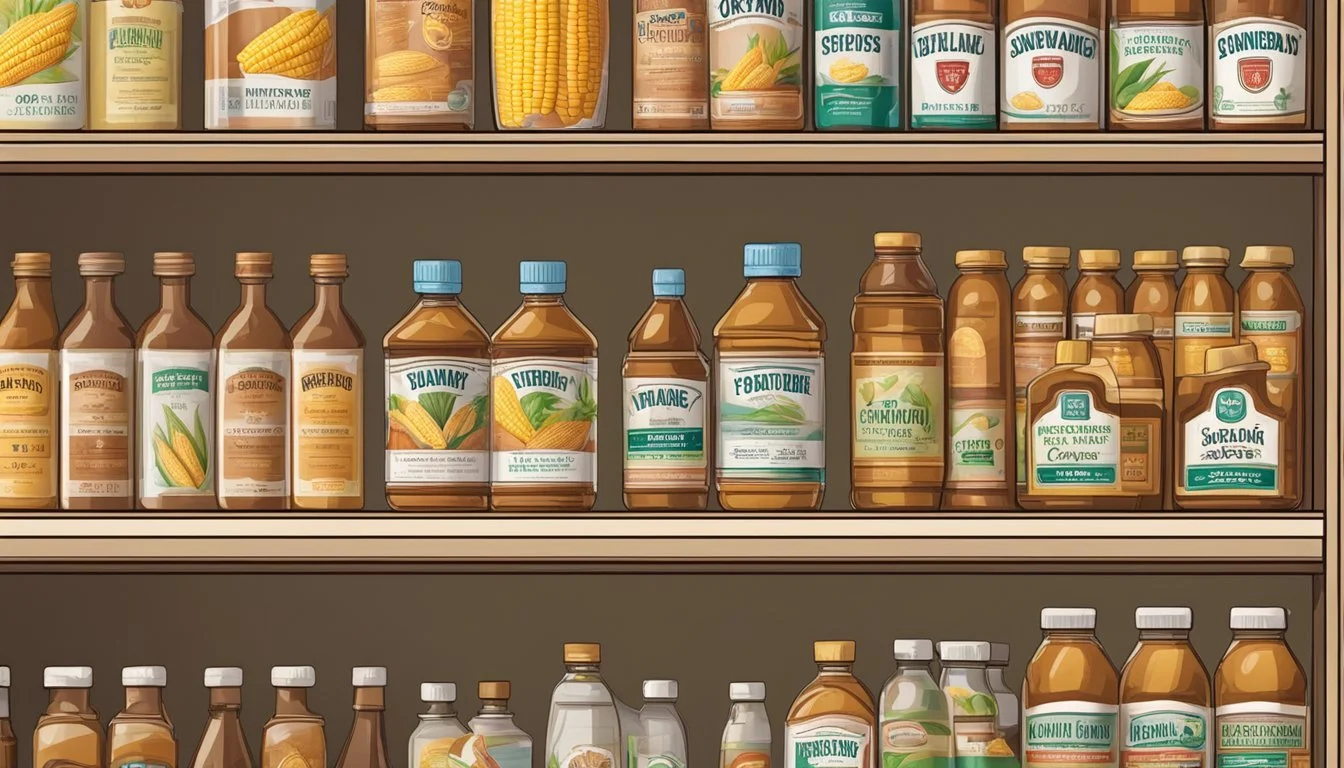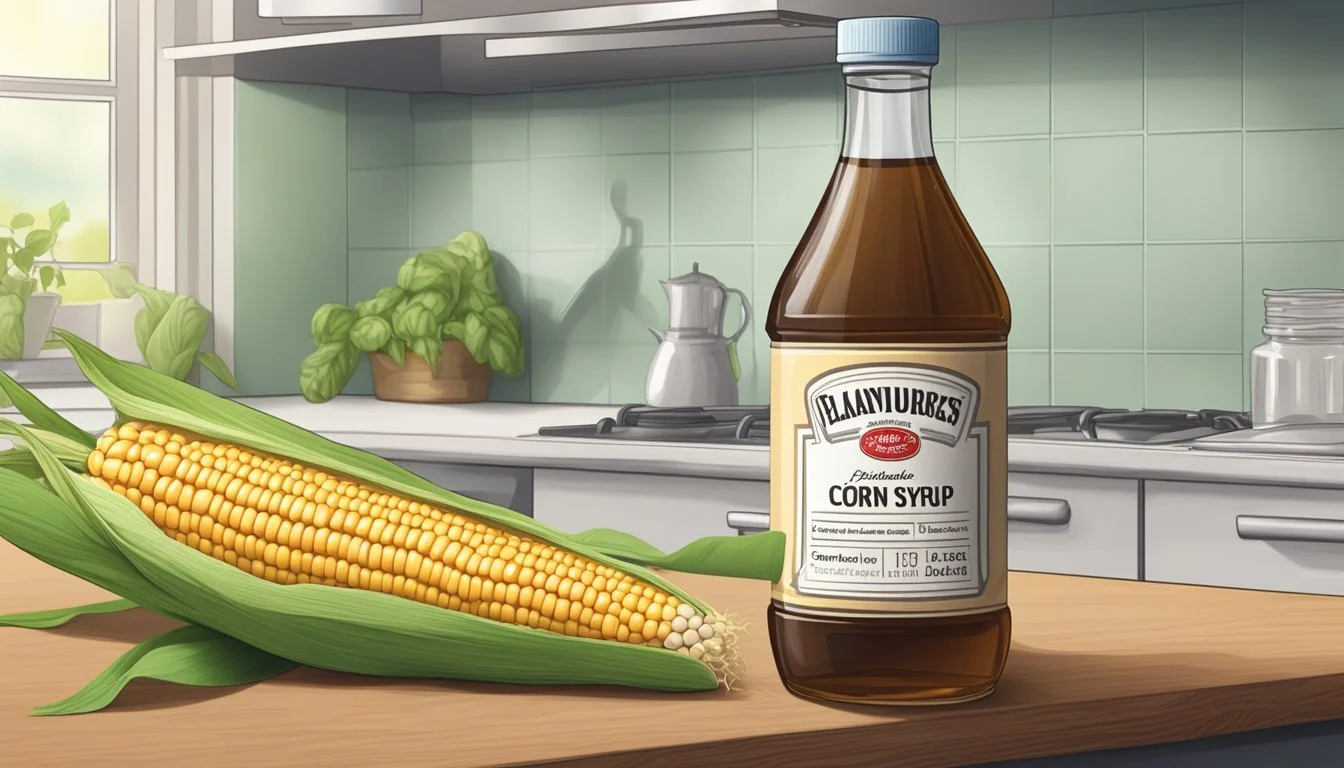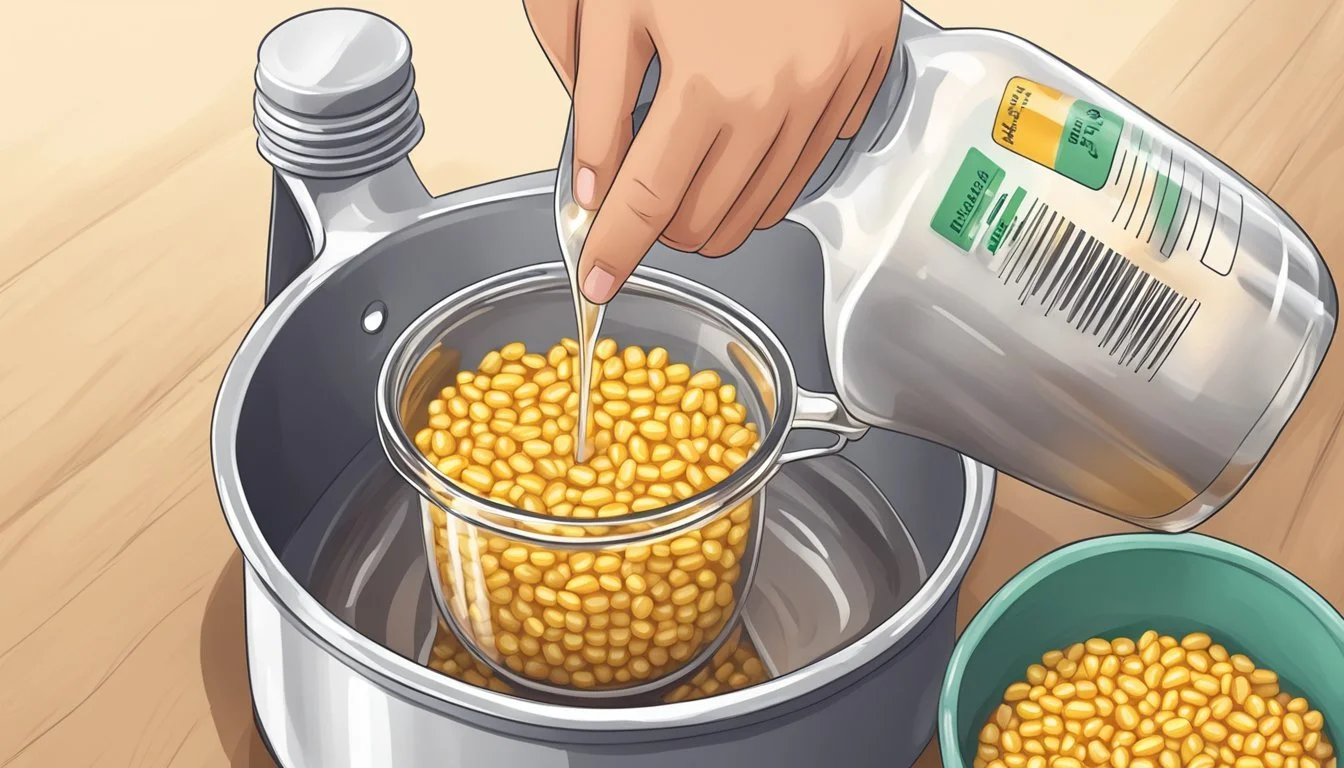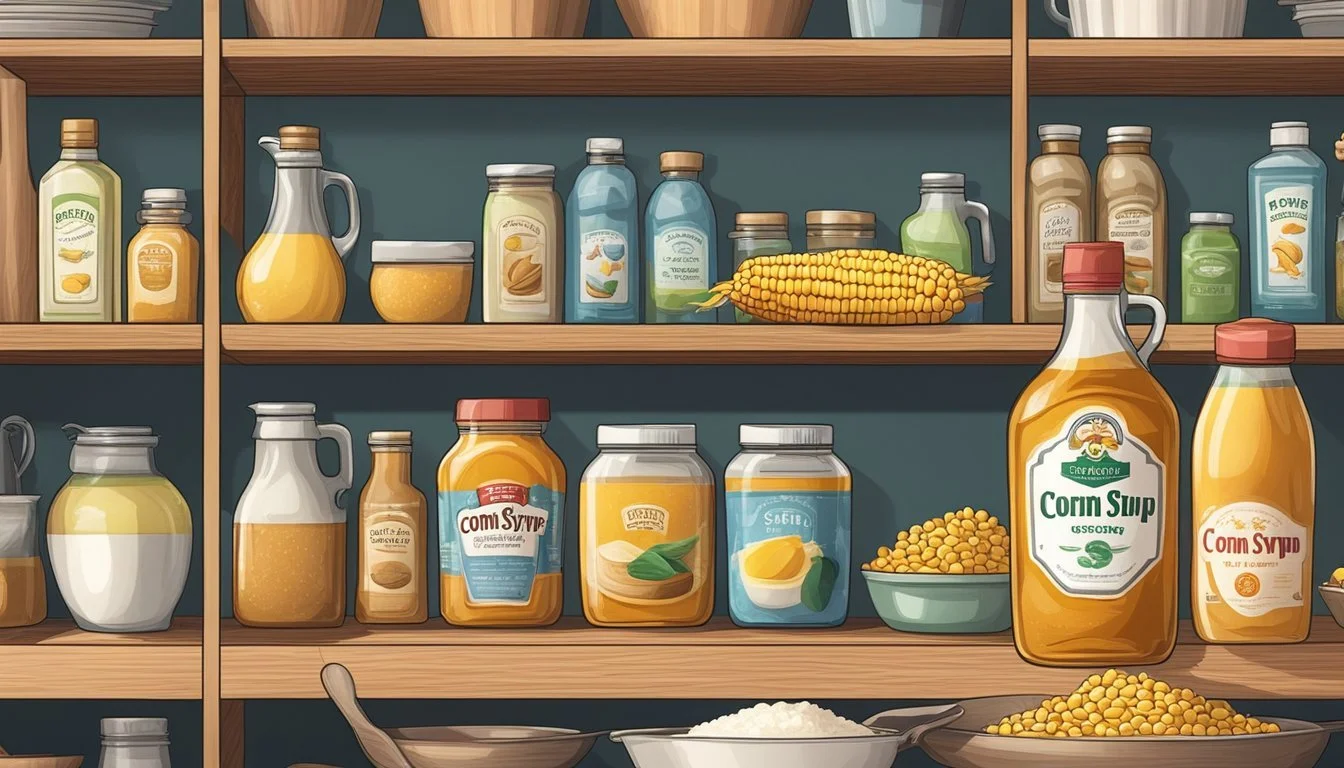Does Corn Syrup Go Bad?
Understanding Shelf Life and Storage Tips
Corn syrup, a liquid sweetener made by breaking down cornstarch into glucose by enzymes, is a staple in many kitchen pantries and commercial food products due to its ability to resist crystallization better than other sugars. It plays a pivotal role in confectionery, baking, and processed foods, providing sweetness, extending shelf life, and contributing to the texture and consistency of various treats. The question of whether corn syrup goes bad is often raised by consumers who find a bottle lurking in the back of their cupboard, sometimes past the date printed on the label.
Understanding the shelf life of corn syrup is key for both food safety and quality. While corn syrup can last for a considerable amount of time without spoiling, factors such as storage conditions and potential contamination can affect its longevity. When stored properly in a cool, dry place, corn syrup has a shelf life that can extend well past its best-by date, though some changes in quality, like color or flavor, might occur over time. Opened bottles of corn syrup should be used within a reasonable period for the best taste and quality, although they remain safe for consumption beyond that time frame.
It is important to note that corn syrup's resilience to bacterial growth does not render it invincible. Indicators of spoilage such as off-odors, changed textures, or any signs of mold suggest that the syrup should be discarded, regardless of its age. Observing proper storage methods and visual inspections can help ensure that corn syrup remains a safe and effective sweetener in culinary applications.
Understanding Corn Syrup
Corn syrup is a versatile sweetener commonly found in cooking and baking. It is used in various recipes for its ability to retain moisture and prevent sugar crystallization.
Types of Corn Syrup
There are primarily two types of corn syrup:
Light Corn Syrup: This type is clear and has a mild sweet taste. It is often used to sweeten foods without altering their color.
Dark Corn Syrup: Dark corn syrup has a robust flavor due to the addition of molasses. It's ideal for recipes that require a deeper color and more caramel-like taste.
Additionally, High-Fructose Corn Syrup (HFCS) is another derivative used extensively in processed foods and beverages, valued for its high sweetening power.
Usage in Cooking and Baking
Corn syrup plays a significant role in the kitchen due to its properties. Here's how it's utilized in different culinary applications:
Baking: Prevents crystallization and softens the texture of baked goods.
Candy Making: Essential in achieving smooth textures in candies and icings.
Pancakes: Often used as a topping or mixed into batter for added sweetness.
Because of its glucose content, corn syrup is an effective substitute for sugar in recipes that require a smooth texture or where its humectant qualities are beneficial.
Health and Nutritional Aspects
While corn syrup effectively sweetens dishes, one should consider its nutritional aspects.
Sugar Content: Corn syrup is high in calories and sugar, which can affect blood sugar levels.
Sweeteners: It's used as a sweetener, but overconsumption can lead to health issues associated with high sugar intake.
Alternatives to Corn Syrup: Those looking for alternatives can consider using honey, agave nectar, or maple syrup, which may offer different nutritional profiles.
Storage Guidelines
Storing corn syrup properly ensures it maintains quality over time. These guidelines cover the essential conditions for keeping corn syrup from degrading, the advisability of refrigeration, and detailed shelf life information.
Proper Storage Conditions
Corn syrup should be stored at room temperature in a pantry or cupboard away from direct sunlight and heat sources. The area should be cool and dry to prevent alteration of the syrup's texture. A tightly sealed container is crucial to prevent contamination and the intrusion of moisture, which can lead to spoilage.
Temperature: Room temperature (50°F to 70°F).
Container: Tightly sealed to prevent contamination.
Location: Away from heat and light.
Refrigeration and Freezing
While refrigeration isn't necessary for unopened corn syrup, once opened, it may benefit from being stored in the fridge to extend its quality. Refrigeration can help slow down changes in color and flavor. Freezing corn syrup is not recommended as it can alter its texture and quality.
Post-Opening: Refrigerate to maintain quality.
Freezing: Not advised due to texture changes.
Shelf Life Details
An unopened container of corn syrup has a significantly long shelf life and can last for several years without spoilage. Once opened, the quality is best when used within a shorter timeframe, although it remains safe for consumption. There is no need to discard it solely based on the best-by date as it has an indefinite shelf life. Regularly inspect for signs of mold or off-odors as indications to discard the product.
Unopened Shelf Life: Extensive, often up to 2 years or more.
Opened Shelf Life: Safe indefinitely; best quality if used within a defined period.
Indicators of Spoilage: Mold, discoloration, or unpleasant odors.
Identifying Spoilage
To ensure safety and quality, consumers should be aware of the signs of spoilage in corn syrup. Identifying visual and textural changes, assessing aroma and flavor, and checking for contaminants are key in determining whether corn syrup has gone bad.
Visual and Textural Changes
One should visually inspect corn syrup for any alterations in appearance. It typically appears clear and smooth when fresh. Signs of spoilage include:
Color change: Any deviation from the original color, potentially indicating degradation.
Texture changes: The presence of crystallization or if the syrup begins to crystallize can signal spoilage.
Odor and Flavor Assessment
Corn syrup should have a mild, sweet aroma and flavor when it is fresh. Spoilage is often accompanied by:
Off odor: A foul or rancid smell is a strong indicator that the corn syrup should not be used.
Flavor: Any changes, especially a loss of the characteristic caramel flavor, can signify that the syrup is past its best.
Mold and Contaminants
Corn syrup should always be free of mold and contaminants.
Mold growth: The presence of mold, which would appear as fuzzy spots either on the surface or embedded within the syrup, is a definite sign of spoilage.
Contaminants: Any foreign particles or substances should be cause for concern and may lead to spoilage if not addressed.
Deciphering Expiration Information
In exploring the reality of corn syrup's longevity, one must differentiate between safety and quality concerns. The expiration date is often not the final arbiter of edibility.
Understanding Expiration Dates
The "expiration" or "best-by" date on a corn syrup bottle is primarily about quality assurance; it is not a safety cut-off. Manufacturers set this date to suggest when the corn syrup is at its peak quality in terms of flavor and texture. This date is not indicative of when the corn syrup becomes unsafe to eat.
Usage After Expiration
Corn syrup, due to its high sugar content, may remain safe to eat well after its expiration date. This is because sugar acts as a preservative that inhibits microbial growth. However, the quality—including factors such as flavor, color, and consistency—may decline over time. If the expired corn syrup passes a visual and olfactory check—clear appearance, no off-odors—it may still be safe for consumption.
Safe Handling and Usage
Proper care and storage practices are essential when handling corn syrup to ensure food safety and maintain its quality. These practices help prevent spoilage by reducing the risk of contamination and bacterial growth.
Maintaining Cleanliness
Unopened corn syrup can last for a long time when kept in a clean and dry environment. Once the seal is broken, opened containers should always be handled with clean utensils to preserve the syrup's integrity. Jars or bottles should be wiped down regularly to prevent sticky residues, which can attract microorganisms and lead to contamination.
Before use: Wash hands thoroughly with soap and water.
After use: Seal the container tightly to prevent exposure to air and impurities.
Storage: Keep in a cool, dry place away from direct sunlight and heat sources.
Preventing Cross-Contamination
Cross-contamination can occur when food safety measures are not followed, potentially introducing bacteria and other harmful microorganisms into the corn syrup. Preserving the quality of the syrup involves strict adherence to cleanliness to prevent any contamination.
Utensils: Always use clean utensils when dispensing corn syrup to avoid introducing contaminants from other foods.
Separation: Store the corn syrup away from raw foods and any source of contamination to maintain a clean environment.
Inspection: Regularly check the syrup for signs of spoilage, such as odor changes or mold, and discard if abnormalities are detected.
Alternatives and Substitutions
In the event that a recipe calls for corn syrup and none is available, or if a substitution is preferred for health or flavor reasons, there are several alternatives that can serve as sweeteners. These substitutes may impart different flavors or have varying levels of sweetness, so adjustments may be necessary to achieve the desired outcome in the final product.
Honey: A natural sweetener with floral undertones, honey can replace corn syrup in a 1:1 ratio. However, it is generally sweeter and has a stronger flavor.
Maple Syrup: Extracted from the sap of maple trees, maple syrup is less processed and brings a distinct taste to dishes. It can also be used in a 1:1 substitution for corn syrup.
Agave Nectar: Offering a mild flavor, agave nectar is appropriate for dishes where a subtle sweetness is required. However, it might not be suitable for candy-making due to its composition.
Brown Rice Syrup: With a molasses-like consistency and a nutty flavor, brown rice syrup can be used in similar applications to corn syrup, though it has a stronger taste.
Molasses: Thicker and not as sweet as corn syrup, molasses is best used in recipes where its robust flavor would complement the other ingredients.
Substitute Ratio Best for Note Honey 1:1 Baking and glazes Sweeter, may alter flavor Maple Syrup 1:1 Baking, pancakes, and waffles Distinct flavor, less processed Agave Nectar Equal parts Sauces, beverages, dressings Mild flavor, not ideal for candy Brown Rice Syrup 1:1 Nougats, gummies Prevents crystallization, strong flavor Molasses 1:1 Baked goods, marinades Less sweet, robust flavor
The choice of sweetener substitute will depend on the requirements of the recipe and personal taste preferences. Cooks and bakers should consider these factors when selecting an alternative to corn syrup.
Additional Information
This section provides specific details on gluten content and allergy considerations, as well as how environmental factors such as temperature impact the shelf life of corn syrup.
Gluten-Free and Allergy Information
Corn syrup is naturally gluten-free, making it a safe sweetener choice for individuals with celiac disease or gluten sensitivity. However, they should ensure that cross-contamination has not occurred if the corn syrup is processed in facilities that also handle gluten-containing products. Additionally, corn syrup is generally considered allergen-free, although those with corn allergies or sensitivities should avoid it.
Common Allergen Considerations:
Gluten: Not present in corn syrup
Corn: May cause reactions in corn-allergic individuals
Environmental Factors
The storage environment plays a crucial role in maintaining the quality of corn syrup. Exposing it to temperature fluctuations can lead to spoilage indicators such as discoloration or cloudiness. To avoid contamination and extend its shelf life, it is advisable to store corn syrup in a cool, dry place, away from direct sunlight and heat sources. Storing it in the fridge is not necessary, as corn syrup has a high sugar content that inhibits bacteria growth, but it can be kept there to maintain its quality over a long period. Keeping the container tightly sealed will prevent the syrup from absorbing moisture or odors, which can affect its quality.
Recommended Storage Practices:
Temperature: Consistent, cool pantry shelf or kitchen cabinet
Fridge: Optional for extended shelf life
Container: Must be airtight to prevent moisture and odor absorption







